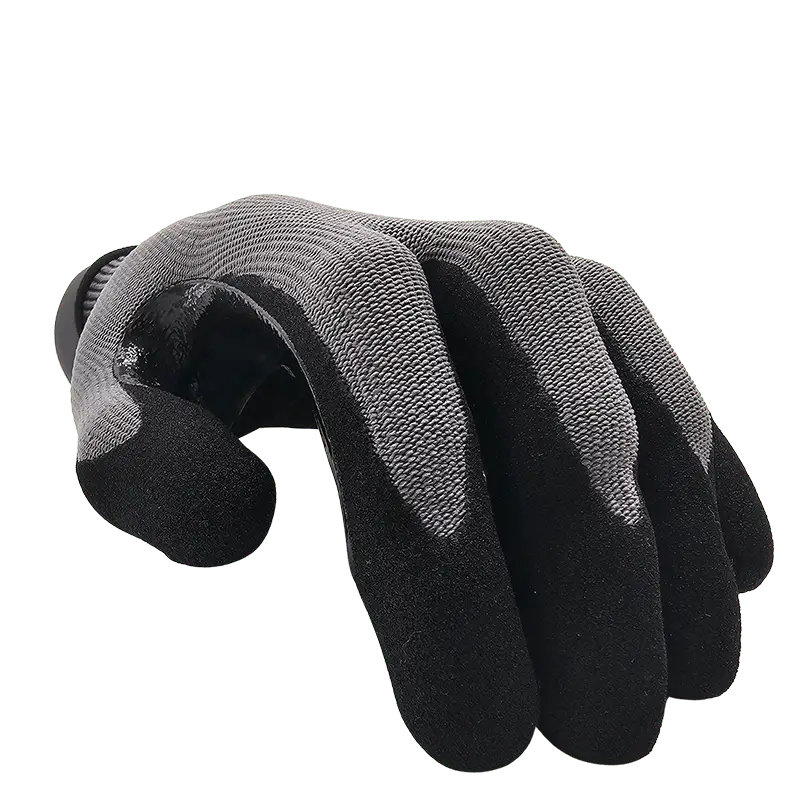
When handling tools or materials, having the right work gloves with a strong grip1 makes all the difference. I’ve worked with countless glove types over the years, and I know firsthand how important it is to choose the right pair. The right gloves not only improve control but also enhance safety by reducing slippage2.
The best work gloves for grip3 use coatings like nitrile, rubber, and latex, providing excellent traction in various work conditions.
Now, let’s dive into what makes a glove ideal for grip and how to choose the best one for your job.
What is the Best Material for Gripping Gloves?
The best glove materials for grip are nitrile, rubber, and latex. Nitrile offers superior oil resistance, rubber provides excellent traction in wet conditions4, and latex delivers flexibility for precision tasks. Choose based on your work environment for the best results.
I always emphasize that glove material plays a crucial role in grip performance5. After years in the industry, I’ve found that rubber, nitrile, and latex are the top materials for secure traction.
- Rubber: Ideal for wet or slippery conditions, offering strong traction in construction and plumbing.
- Nitrile: My go-to for oil and chemical resistance, perfect for automotive, food handling, and industrial work.
- Latex: A flexible option that works well for precision tasks, but it’s not as effective in oily or wet environments compared to nitrile.
If I’m choosing gloves for maximum grip, I always match the material to the specific work environment.
What Gloves Have the Best Grip?
Some gloves are designed specifically for maximum grip6, and over the years, I’ve tested many types.
For the best grip, choose nitrile-coated gloves7 for oily materials, rubber-coated gloves8 for wet environments, and latex-coated gloves for dexterity-focused tasks like medical work.
Gloves with nitrile, rubber, or latex coatings offer the best grip, each with unique advantages:
- Nitrile-coated gloves: The best choice for handling oily or greasy materials, perfect for automotive, manufacturing, and maintenance work.
- Rubber-coated gloves: Ideal for wet conditions where slip resistance is critical, such as in construction and plumbing.
- Latex-coated gloves: A solid option for dexterity-based tasks, commonly used in medical and laboratory work.
Whenever I select gloves for myself or my team, I always consider the work environment and the level of grip needed.
—
What is the Best Glove Coating for Grip?
For the best grip, nitrile-coated gloves provide excellent traction in oily environments, rubber-coated gloves work well in wet conditions, and latex coatings offer great dexterity.
I’ve seen firsthand how glove coatings can make or break grip performance9. Here’s a breakdown of the best options:
| Glove Coating | Best Use Case | Grip Level |
|---|---|---|
| Nitrile | Handling oils, chemicals, rough surfaces | ⭐⭐⭐⭐ |
| Rubber | Wet or oily environments | ⭐⭐⭐⭐ |
| Latex | Dexterity-focused tasks | ⭐⭐⭐ |
| Polyurethane (PU) | Light industrial work | ⭐⭐ |
Are Nitrile Gloves Good for Grip?
I get this question a lot, and my answer is always yes!
Nitrile gloves offer superior grip in oily conditions10 due to their textured surface, oil resistance, and durability, making them ideal for automotive and industrial work.
- Textured nitrile surfaces provide better traction, which is why I always recommend them for automotive and manufacturing work.
- Oil-resistant properties prevent slippage, making them a top choice for handling lubricated tools or greasy materials.
- Durability and puncture resistance make them last longer, even in tough environments.
If I’m working with slick or oily surfaces, nitrile gloves are my first choice.
How Can I Make My Gloves Grip Better?
Improve glove grip by choosing textured coatings like sandy nitrile, using grip-enhancing sprays, and keeping gloves clean and dry.
If my gloves aren’t giving me the grip I need, I use a few tricks to enhance traction:
- Choose gloves with textured coatings like sandy nitrile, foam nitrile, or microfoam coatings.
- Use grip-enhancing sprays or grip pads for extra traction.
- Keep gloves clean and dry since dirt, grease, or excessive wear can reduce grip performance.
Whenever I need extra grip, I always look for high-friction coatings or additional grip-enhancing solutions.
Do Gloves Improve Grip Strength?
Gloves don’t increase grip strength but improve traction, reduce hand fatigue, and enhance control, making tasks easier and safer.
- They reduce hand strain by allowing a firm hold with less effort.
- They enhance safety by preventing accidental slips.
- They provide better control, especially when handling heavy or slick materials.
I’ve noticed that high-grip gloves help me maintain control and reduce hand fatigue over long periods, making my work more efficient.
Conclusion
Over the years, I’ve tested and used countless work gloves, and I can confidently say that the best gloves for grip are made with nitrile, rubber, or latex coatings. Choosing the right gloves ensures:
✅ Better control over tools and materials
✅ Increased safety and reduced hand fatigue
✅ Stronger grip in wet, oily, or dry conditions
If you’re unsure which gloves fit your needs, feel free to reach out for expert recommendations!
-
Discover top-rated work gloves that enhance grip and safety, ensuring you choose the best for your tasks. ↩
-
Learn how specific glove features can boost your control and safety while working, making your tasks easier and safer. ↩
-
Find expert recommendations on the best work gloves designed for optimal grip in various conditions, ensuring your safety and efficiency. ↩
-
Learn how rubber gloves can improve safety and performance in slippery environments, crucial for many professions. Explore this link for more details. ↩
-
Understanding the significance of glove material can enhance your grip performance in various tasks. Explore this link for detailed insights. ↩
-
Discover expert recommendations on gloves designed for optimal grip in various conditions. ↩
-
Learn about the advantages of nitrile-coated gloves for handling oily materials and more. ↩
-
Explore why rubber-coated gloves are essential for slip resistance in wet environments. ↩
-
Understanding how different glove coatings affect grip can enhance safety and efficiency in various tasks. ↩
-
Discover the unique features of nitrile gloves that make them ideal for oily environments and industrial work. ↩



